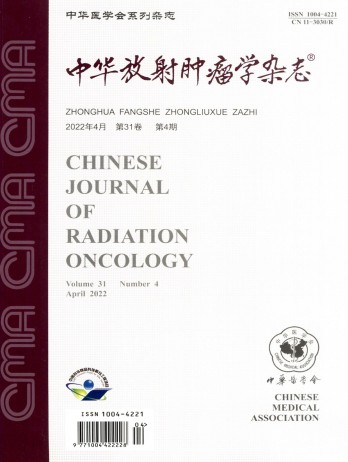个性化3d打印阴道模板在宫颈癌近距离治疗中的应用价值
引用次数: 0
摘要
目的介绍个性化3d打印腔内/间隙阴道模板设计的工作流程。研究了剂量学参数和操作安全性,以评价3d打印模板和徒手植入的性能。方法选取40例既往行腔内/间质Ir-192 HDR近距离放疗的患者作为研究对象。所有患者随机分为治疗组(n=20)和对照组(n=20)。治疗组采用个性化3d打印模板治疗20例。采用ct预计划确定针植入术管。然后用3D打印机制作出具有定制形状和植入管的模板。最后在CT引导下插入模板。对照组20例接受徒手植入。针的插入是经验决定的,没有预先计划的过程。结果治疗组高危CTV的D90差异较小,而直肠、膀胱和乙状结肠的D2cm3明显改善。同时,治疗组的高剂量区和适形指数也有所改善。共插入针头273根,发现1根(0.3%)未使用针头。治疗组针刺过程中无正常组织穿透。对照组共插针203根,未使用针4根(2.0%),插针3根(1.5%)穿刺组织正常。结论个体化3d打印模板植入方法与徒手植入相比,在剂量学和安全性方面具有优势。实际处理可达到剂量学设计的预计划要求。关键词:3D打印;颈neoplamsm /短程疗法;剂量测定法本文章由计算机程序翻译,如有差异,请以英文原文为准。
Application value of individualized 3D-printed vaginal template for cervical cancer brachytherapy
Objective
To introduce the workflow of individualized 3D-printed intracavitary/interstitial vaginal template design. Dosimetric parameters and operation safety were investigated to evaluate the performance of 3D-printed template and freehand implantation.
Methods
Forty patients previously treated with intracavitary/interstitial Ir-192 HDR brachytherapy were enrolled in this study. All patients were randomly divided into the treatment (n=20) and control groups (n=20). In the treatment group, twenty patients were treated with individualized 3D-printed template. CT-based preplan was carried out to determine the needle implantation cannels. Template with customized shape and implantation cannels was then produced by a 3D printer. Finally, the template was inserted under CT guidance. In the control group, twenty patients received freehand implantation. Needle insertion was decided empirically without the preplan process.
Results
The difference of D90 for high risk CTV was found to be minor, while the D2cm3 in the rectum, bladder and sigmoid was significantly improved in the treatment group. Meanwhile, the high dose region and conformal index were also improved in the treatment group. A total of 273 needles were inserted and one (0.3%) not-used needle was found. No normal tissues were penetrated during needle insertion in the treatment group. In the control group, a total of 203 needles were inserted and 4(2.0%) not-used needles were observed, and normal tissue penetration occurred in 3(1.5%) needle insertion.
Conclusions
The individualized 3D-printed template implantation approach has advantages in terms of dosimetry and safety compared with freehand implantation. The actual treatment can achieve the dosimetric design requirements of the preplan.
Key words:
3D printing; Cervical neoplamsm/brachytherapy; Dosimetry
求助全文
通过发布文献求助,成功后即可免费获取论文全文。
去求助
来源期刊
自引率
0.00%
发文量
6375
期刊介绍:
The Chinese Journal of Radiation Oncology is a national academic journal sponsored by the Chinese Medical Association. It was founded in 1992 and the title was written by Chen Minzhang, the former Minister of Health. Its predecessor was the Chinese Journal of Radiation Oncology, which was founded in 1987. The journal is an authoritative journal in the field of radiation oncology in my country. It focuses on clinical tumor radiotherapy, tumor radiation physics, tumor radiation biology, and thermal therapy. Its main readers are middle and senior clinical doctors and scientific researchers. It is now a monthly journal with a large 16-page format and 80 pages of text. For many years, it has adhered to the principle of combining theory with practice and combining improvement with popularization. It now has columns such as monographs, head and neck tumors (monographs), chest tumors (monographs), abdominal tumors (monographs), physics, technology, biology (monographs), reviews, and investigations and research.

 求助内容:
求助内容: 应助结果提醒方式:
应助结果提醒方式:


